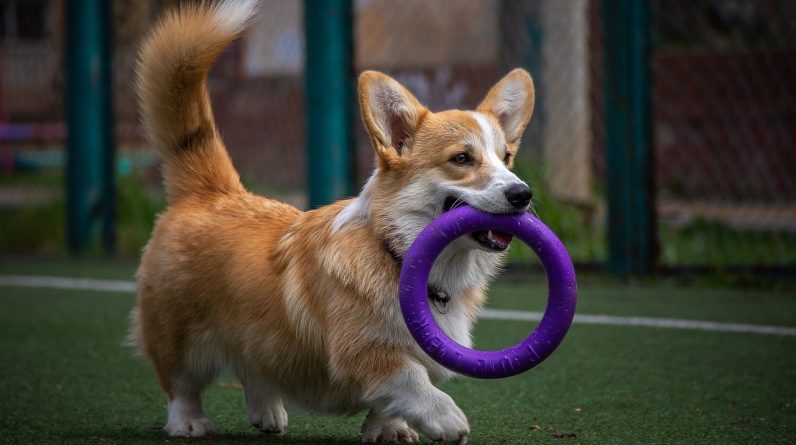Don’t let the phenomenon of eclipsing ruin your training! It can blow holes in an otherwise robust counterconditioning procedure.
Why is Lewis staring at my pocket? What Is Overshadowing? The term overshadowing has a long-established significance in classical conditioning. The following meaning is a little technical, but I’ll explain in the rest of the piece. Eclipsing happens when two stimuli are classically conditioned at the exact same time. Frequently, the stimuli are of different sensory methods. An example would be a visible
light and an audible noise. When they are conditioned simultaneously, one stimulus may control and be more strongly conditioned than the other. It is one of the many things that can
trigger a classical conditioning procedure to stop working or be weak. So the above meaning can make good sense to all readers, I’ll first evaluate the difference in between operant conditioning and classical(Pavlovian )conditioning. In operant conditioning, there is an antecedent, a behavior, and an effect. For example, I cue my pet to come to me
(antecedent). My dog runs to me( behavior). I provide my pet something great (effect). Most of us recognize with this type of knowing. In classical conditioning, no behavior is needed of the animal. We pair something the animal is indifferent to or stressed over with something the animal likes. We do this slowly at intensities that don’t scare the animal. The order is: 1)present the odd thing; 2)present the terrific thing. Then the animal consumes, beverages, experiences, or plays with the terrific thing. Over time, this transfers the animal’s participant behaviors and great feelings about the excellent thing to the previously strange thing.
We call the originally strange thing the conditioned stimulus. The fantastic thing is generally an unconditioned stimulus: something the animal doesn’t need to find out to take pleasure in or require. Here’s a more in-depth look at what classical conditioning is and is not.
Because there are just 2 things to do– expose them to the strange thing, then provide the great thing– it looks like classical conditioning would be dead simple. However there are numerous things that can fail, and among them is overshadowing.
< img src= "https://i0.wp.com/eileenanddogs.com/wp-content/uploads/2023/07/Clara-CC-at-the-mall-1024x718.jpeg?resize=1024%2C718&ssl=1"alt =" A tan dog with a black muzzle and black on her ears is resting on a sidewalk. She is using a pink harness and is on leash. Her mouth is open and she looks delighted."width ="1024" height="718"/ > Clara is happy and relaxed throughout counterconditioning at the shopping mall Overshadowing is likely when you have a stimulus with more than one aspect, such as a light and a sound together. This is called a substance stimulus, and they happen in the real life a lot. When the private stimuli get conditioned all at once, whichever stimulus is more powerful and more obvious to the animal will be conditioned more strongly. It is said that this stimulus is more prominent. More of the great things from the great thing will move to it. The other stimulus will get much less conditioning. Experiments have actually been performed, for instance, with a dim light and a loud noise that happen all at once (Kehoe, 1982; Moore, 2012, p. 204– 205 ). They are conditioned together, then tested independently. In this case, the sound will likely be robustly conditioned. But the light will have really little conditioning. You could reverse the explore a brilliant light and a quiet noise, and the results would be
the opposite (although both examples would differ by species). The overshadowed stimulus does not go entirely undetected; it merely does not become an effective conditioned stimulus.
Opportunity, 2003, p. 84
How is this pertinent to our real-world training? The majority of us are not trying to condition a sound and a light at the exact same time. More likely, we are dealing with a single thing like a muzzle, a noise, or the sight of another pet. But unexpected substance stimuli occur all the time. As one textbook explains, it’s nearly difficult to prevent them (Pierce & Cheney, 2008, p. 58).
There are constantly many things going on in the environment, and our animals are constantly attempting to determine what the best predictors of good (and bad) things are.
The factor this is very important is that in some cases the stronger conditioning will connect to something we don’t plan, rather of the thing we desire.
Pavlov found overshadowing very early on, and was the one who named it. Here’s what he stated:
When the stimuli making up the compound act on various analyzers, the impact of one of them when evaluated singly was discovered really frequently to eclipse the result of the others practically completely, and this independently of the variety of supports to the substance stimulus.
Pavlov, 1927, p. 141
Other researchers have explained that even if a stimulus is the weaker among a substance stimulus, it can work great as a specific stimulus.
… if two stimuli exist together as a compound DS, then one may control or eclipse the other, although both CSs would be completely reliable if they were presented alone.
Schwartz et al, 1995, p 59
It is very important to bear in mind that eclipsing uses to 2 conditioned stimuli being simultaneously conditioned by the very same thing.
Why Do We Required to Understand About Overshadowing (And Some Other Stuff)?
We require to comprehend overshadowing so we can carry out the clearest, cleanest, most successful training we can. Classical conditioning, ad hoc counterconditioning, and desensitization and counterconditioning are uncomplicated to explain however the devil remains in the details. Timing is crucial, and it’s a relentless battle to get the conditioned stimulus to be perfectly salient to the animal. Training in the real life, beyond the laboratory, indicates we can’t entirely manage the environment. For example, I bet you have at least one light switch in your home that clicks when you turn it on.
Eclipsing is not the only capacity issue.
To carry out clean and efficient classical conditioning:
- Be sure you also understand how to prevent obstructing and reverse conditioning.
- Be sure you know how and why to do termination trials.
- Know the difference in between hold-up and trace conditioning.
- Ensure you comprehend the importance of the intensity of the unconditioned stimulus.
- Be sure you know why the first few direct exposures get you one of the most bang for your buck.
- Discover the ideal time in between trials (longer than you believe!).
- Discover the surprise factor and how to use it. There is strong proof that the more unexpected the appearance of the unconditioned stimulus is, the more powerful the conditioning affect (Rescorla & Wagner, 1972). Nothing cleans up one’s classical conditioning act much better than determining how to remove all the “tells” that something incredible is going to emerge.
These are not simply theoretical concerns. They are principles and practices that apply directly to reality training and can make your training the very best it can be.
If you have actually been reading the blog site and enjoying my videos for a while, you may state, “However you have not followed all these things!” That’s ideal! I’m always discovering. I prepare to get some better videos up soon.
Real-Life Examples of Eclipsing
< img src ="https://i0.wp.com/eileenanddogs.com/wp-content/uploads/2023/07/Tags-on-collar.jpeg?resize=768%2C723" alt= ""width=" 768 "height= "723"/ > Sound webinar Here are some useful examples of overshadowing in canine training because of a compound stimulus. An auditory marker plus a hand reaching for food. Clickers and other markers are classically conditioned to predict a reinforcer, typically food. But if you constantly reach for your treat bag at the exact same time you use your marker, you have a substance stimulus. Both are conditioned stimuli; your pet wasn’t born understanding the significance of your hand motion or the sound of your marker. One stimulus, the marker, is typically acoustic. The other is visual. One will eclipse the other and be more salient to the dog. If your pet constantly stares at your treat hand, you know which one that may be. Lewis enjoyed to require me by gazing at my hand and pocket so I might take the picture above. Reaching toward your reward bag or pocket can overshadow the noise of your marker and might cause its conditioning to be weak. An unexpectedly noticeable canine plus jingling tags. Let’s say you are helping a reactive dog using classical counterconditioning. You expose the pet dog to the sight and noise of an assistant canine at a non-aversive strength and present something incredible. You carry out trials of this at various times and areas, using desensitization to gradually bring the assistant dog more detailed while staying in the trained canine’s comfort zone.
However what if your helper dog has loudly jingling collar tags? You have a substance stimulus: the visual look of the helper pet and the sound of the tags. If the dog you are dealing with has vision problems, or your setup caused the look of the pet not to be obvious, or your dog is delicate to noises, the jingling tags might be more salient. What occurs in reality when a dog appears without jingling tags, the better conditioned stimulus? That positive association you attempted to build up so thoroughly may not be there. It got overshadowed. When that type of issue happens, people are apt to blame the conditioning itself or blame the pet dog.
Application to Operant Conditioning For some reason, the majority of posts on overshadowing I’ve read by canine fitness instructors utilize operant examples. They are describing compound discriminative stimuli (cues) rather than compound conditioned stimuli utilized as conditioned reinforcers. (Whew!) There is a strong relationship in between these 2. Hints can be higher order conditioned stimuli, and conditioned reinforcers supply info about habits. The distinction is generally the role the stimulus plays in a training plan.
However in behavior analysis, the term eclipsing is utilized more when referring to very first order classical conditioning. Out of 8 textbooks, I discovered just one operant example (Domjan, 2014, p. 217). I’ve discovered some psychology articles that use the term to operant protocols, though.
Here’s a paper about substance discriminative stimuli in operant procedures (Colwill & Rescorla, 1988). This is similar to the examples in the pet dog fitness instructors’ short articles. The article doesn’t utilize the term eclipsing (and the authors were experts on it). I’ll be happy to be fixed if eclipsing is used formally in the operant arena though; maybe I haven’t found it yet.
I believe I understand why operant examples of completing discriminative stimuli are generally used in more informal articles: examples are simpler to think of. The majority of us have actually recognized at times that a dog is following our hand signal and not the spoken hint we thought we were teaching. Even though classical overshadowing can take place to us, it’s perhaps less common or less remarkable.
When Eclipsing Does Not Occur
There’s constantly an exception. When handling conditioned food aversion, there are particular stimuli that heighten other stimuli rather than overshadowing them. This is called the potentiation result (Bouton, 2007, p. 216– 217). But the majority of us are never going to encounter this.
What Is Overshadowing Not?
A short article is being circulated in the training world that uses the term “overshadowing” to refer to conflicted psychological actions in horses due to defective training. The author defines overshadowing as “… the food reinforcer and associated behavior are masking the animal’s true sensations and habits around a stimulus.”
This distinctive use of the term can do absolutely nothing however cause confusion. Overshadowing is a phenomenon with a huge amount of research study behind it and has been in the vocabulary of researchers and knowledgeable fitness instructors for almost 100 years. Utilizing it instead to refer to training mistakes that trigger a horse or other animal to wind up afraid instead of comfy can only muddy the waters.
Paradoxically, comprehending what eclipsing and the other terms I point out above mean might assist deal with the issues described in the article.
Referrals
Bouton, M. E. (2007 ). Learning and habits: A contemporary synthesis. Sinauer Associates.
Opportunity, P. (2003 ). Knowing and Habits. Toronto: Thomson-Wadsworth. p 84
Colwill, R. M., & Rescorla, R. A. (1988 ). Associations in between the discriminative stimulus and the reinforcer in crucial learning. Journal of Experimental Psychology: Animal Behavior Processes, 14( 2 ), 155.
Domjan, M. P. (2014 ). The concepts of learning and habits. Cengage Learning.
Kehoe, E. J. (1982 ). Eclipsing and summation in compound stimulus conditioning of the bunny’s nictitating membrane reaction. Journal of Speculative Psychology: Animal Habits Processes, 8( 4 ), 313.
Moore, J. W. (Ed.). (2012 ). A neuroscientist’s guide to classical conditioning. Springer Science & Business Media.
Pavlov, I.P. (1927) Conditioned Reflexes: An Examination of the Physiological Activity of the Cerebral Cortex. Translated and Modified by G. V. Anrep. Oxford University Press, London. Can be accessed here.
Pierce, W. D., & Cheney, C. D. (2008 ). Habits analysis and learning (fourth ed.). Psychology Press.
Rescorla, R.A., & Wagner, A.R. (1972) A theory of Pavlovian conditioning: Variations in the efficiency of reinforcement and nonreinforcement. In: Classical Conditioning II: Current Research and Theory (Eds Black, A.H., & Prokasy, W.F.) New York City: Appleton Century Crofts, 64-99.
Schwartz, B., Wasserman, E. A., & Robbins, S. J. (1995 ). Psychology of knowing and behavior. New York: W. W. Norton & Company.
Copyright 2023 Eileen Anderson
Like this:
Like Packing …






